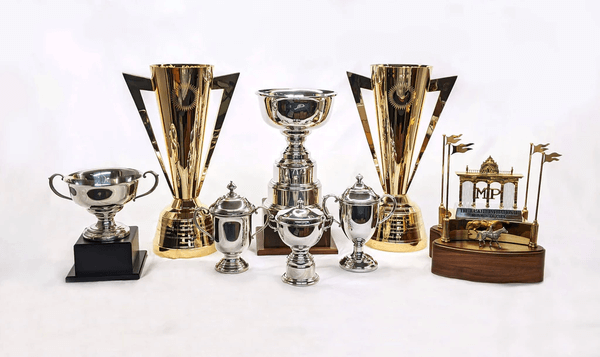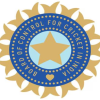Tennis fans all over the world follow dozens of professional tournaments every year, but a handful of competitions really stand out. The most prestigious tennis tournaments include the four Grand Slam events—Wimbledon, French Open, Australian Open, and US Open—plus the ATP and WTA Finals, and major Masters 1000 events like Indian Wells and Miami Open.
These top tournaments attract the best players and offer the biggest prize money, ranking points, and global audiences. Each one has its own flavor, from Wimbledon’s old-school grass courts and white outfits to the gritty clay battles at Roland Garros.
Table of Contents
If you’re thinking about attending in person, or just want to know which events matter most, understanding the tournament hierarchy will seriously boost your appreciation for the sport. The tennis calendar is packed with thrilling events, from iconic singles championships to team competitions like the Davis Cup, each showcasing top-level play.

Grand Slam tennis tournaments
The four Grand Slam tournaments are tennis’s crown jewels, played on different surfaces and in different corners of the world. These are the events that define careers and draw the sport’s biggest stars.
Wimbledon championship
Wimbledon is the gold standard of tennis tournaments, held in London every year from late June to early July. The All England Lawn Tennis and Croquet Club has hosted this event since 1877, making it the oldest tennis championship.
It’s the only major played on grass, which makes for fast points and tricky bounces. Players have to stick to a strict all-white dress code, and fans munch on strawberries and cream as they watch the action.
Notable champions:
- Roger Federer holds the men’s record with 8 titles
- Martina Navratilova leads the women’s side with 9 championships
Rain delays are a regular thing, thanks to London’s unpredictable weather. Celebrities, royals, and die-hard fans all flock to Wimbledon for the unique atmosphere.
Prize money now tops £40 million. Centre Court got a retractable roof in 2009, finally taming the weather (well, mostly).
US Open
The US Open wraps up the Grand Slam season every year, running from late August to early September in New York City. The tournament happens at the USTA Billie Jean King National Tennis Center in Flushing Meadows, Queens.
Hard courts set the stage, with reliable bounces and a medium pace. The vibe is nothing like Wimbledon—it’s loud, energetic, and feels more like a festival sometimes.
Night matches under the lights are electric. Arthur Ashe Stadium, the main court, holds over 23,000 people, making it the biggest tennis arena in the world.
Championship records:
- Pete Sampras, Roger Federer, and Jimmy Connors each won 5 men’s titles
- Chris Evert and Serena Williams both claimed 6 women’s singles titles
The event started back in 1881 as the US National Championships. Prize money usually exceeds $60 million, making it the sport’s richest Slam.
New York’s food and entertainment scene spills into the tournament, adding to the experience.
Australian Open
The Australian Open gets the Grand Slam season rolling every January at Melbourne Park. People call it the “Happy Slam” because of its laid-back vibe and the sunny Melbourne weather.
Matches are played on hard courts, offering conditions a lot like the US Open. The summer heat can be brutal, so the tournament has strict policies to protect players when temperatures soar.
Dominant champions:
- Novak Djokovic holds the men’s record with 10 titles
- Margaret Court leads the women’s side with 11 singles championships
The event is known for its tech innovations, like Hawk-Eye ball tracking and advanced court surfaces. Rod Laver Arena is the main stadium, seating over 15,000 fans.
The tournament started in 1905, with women joining in 1922. Prize money now exceeds AUD $75 million.
Melbourne’s multicultural scene adds a special touch, and the Australian Open often draws the biggest crowds of any Slam.
French Open
The French Open, held at Roland Garros in Paris from late May to early June, is the ultimate clay court test. Players need serious endurance and adaptability to win here.
Clay courts slow down the game and send the ball bouncing high, favoring those with patience and fitness. The red clay is a world away from other Slam surfaces.
Clay court dominance:
- Rafael Nadal owns 14 men’s titles, earning the “King of Clay” nickname
- Chris Evert leads the women’s side with 7 championships
Rallies get longer and strategy matters more than on faster courts. The tournament began in 1891, opening up to international players in 1925.
Roland Garros is named after a French aviator from World War I. The venue’s intimate design lets you hear the thwack of the ball and even players’ voices.
Prize money tops €43 million. Many say winning the French Open is the hardest Slam to conquer, thanks to the clay.
Other major professional tennis tournaments
Besides the Grand Slams, a handful of big tournaments shape the pro tennis season. The BNP Paribas Open at Indian Wells and the Miami Open kick off spring, while Madrid and the Italian Open headline the European clay swing.
BNP Paribas Open (Indian Wells)
The BNP Paribas Open is held at Indian Wells in Palm Springs, California every March. The Indian Wells Tennis Garden, nicknamed “Tennis Paradise,” hosts this event.
This hard court tournament started in 1974 and has called Indian Wells home since 1987. Hundreds of thousands of fans show up each year, making it the biggest event outside the Slams.
Prize money & prestige:
- ATP Masters 1000 and WTA 1000 status
- Large prize pool that lures top-ranked players
- Mandatory for ATP and WTA tour players
Stars like Nadal, Federer, Djokovic, and both Williams sisters have all won here. The desert setting delivers perfect weather and stunning mountain views.
The facilities are world-class, with plenty of courts and great amenities for fans. Indian Wells has become an essential stop for both tours.
Miami Open
The Miami Open comes right after Indian Wells, forming the “Sunshine Double” for players who chase both titles. It’s a hard court Masters 1000 and WTA 1000 event, held in late March.
The tournament takes place at Hard Rock Stadium in Miami Gardens, mixing tennis with a bit of showbiz flair. It moved here in 2019 after years at Key Biscayne.
Key features:
- Part of the ATP Masters 1000 series
- WTA 1000 status
- Two-week format
- Draws celebrities and international crowds
Miami’s heat and humidity push players to their limits. Its location also brings in tons of Latin American fans, adding a different flavor to the crowd.
Prize money matches other big events, so all the top players show up. The Miami Open is a key tune-up before the European clay season.
Madrid Open
The Madrid Open kicks off the top European clay court action every May. You’ll find the tournament at the Caja Mágica, or “Magic Box.”
Madrid Open added women’s competition in 2009 and switched from hard courts to clay that same year. The high altitude in Madrid changes how the ball flies and bounces.
Tournament characteristics:
- Famous for its blue clay courts in 2012 (now back to red clay)
- High altitude affects gameplay
- Combined ATP and WTA event
- Spanish fans bring serious energy
Spanish players, especially Rafael Nadal, have dominated the men’s side. Carlos Alcaraz is the new local star, winning in 2022 and 2023.
The timing makes Madrid a crucial warm-up for the French Open. The altitude gives it a unique twist compared to other clay events.
Italian Open
The Italian Open in Rome gives players their last big clay test before Roland Garros. It all happens at the historic Foro Italico in May.
The venue is gorgeous, with marble statues and classic architecture surrounding the courts. The Italian crowds are loud, passionate, and make for an unforgettable atmosphere.
Tournament details:
- ATP Masters 1000 and WTA 1000 event
- Historic setting dating to the 1930s
- Traditional red clay surface
- Week-long tournament for both tours
All the top players show up, since it’s a mandatory Masters event. Clay specialists use Rome to fine-tune their games before Paris.
Rome’s energy is one-of-a-kind, and the tournament’s history and setting make it a favorite for players and fans alike.
Elite year-end tennis events
The tennis season ends with two big championships, each featuring only the world’s top 8 players in a round-robin format. These events are the ultimate test for the best of the best.
ATP Finals
The ATP Finals are the high point of men’s pro tennis, bringing together the top 8 players of the season. The format is a little different—players are split into two groups of four and everyone plays each other in their group.
The top two from each group move on to the semi-finals. The event is currently in Turin, but it’s bounced around over the years—London hosted from 2009 to 2020.
Tournament format:
- 8 qualified players
- Two round-robin groups
- Semi-finals and final
- Hard court surface
Prize money and ranking points are huge, making this a can’t-miss event for the sport’s elite. The season’s top performers fight it out for the year-end crown.
WTA Finals
The WTA Finals showcase the very best in women’s tennis, with the top 8 players of the year battling for the season’s last big title. This is the grand finale for the WTA calendar.
The format matches the men’s event: round-robin groups, then the best move on to knockout rounds. The tournament has traveled the world—past hosts include New York, Munich, Madrid, Singapore, and Shenzhen. Fort Worth, Texas was the 2022 host.
Key details:
- Started in 1972
- 8 top players
- Round-robin plus semi-finals
- Season-ending championship
The WTA Finals once featured best-of-five set finals from 1984 to 1998, which was unusual for women’s tennis. Now, it’s best-of-three, like most tournaments.
Team and international competitions
Team competitions bring out national pride and shift the usual dynamic in pro tennis. The Davis Cup is the biggest international team event in men’s tennis, while the pro tour structure shapes rankings and careers.
Davis Cup
The Davis Cup is the top international team event in men’s tennis. Since 1900, Great Britain has won the cup 10 times, which is actually not that many given how long the event has been around.
The International Tennis Federation (ITF) runs the Davis Cup. Teams battle it out in knockout ties, with five matches—four singles and one doubles—deciding who moves on.
Format structure:
- All matches are best-of-five sets
- Each tie runs over three days
- Home and away venues switch things up
The United States sits at the top with 32 Davis Cup titles. Australia is just behind with 28, so these two countries really dominate the history books.
Players compete for their countries, not just themselves, which fires up national rivalries and creates moments fans remember for decades.
The tournament started as a challenge between the US and Great Britain, but now more than 130 nations take part in qualifying rounds that run throughout the tennis calendar.
Tennis tour structure and rankings
Pro tennis runs on tour systems managed by different governing bodies. The ATP looks after men’s tennis, and the WTA handles the women’s side.
Tour categories:
- Grand Slams: Four major tournaments each year
- Masters 1000: Nine big men’s events
- ATP 500/250: Lower-tier pro events
Rankings decide who gets into tournaments and where they’re seeded. Players collect points over a rolling 52-week stretch, and Grand Slams award the most points.
To climb the ranks, players need to perform well across different events. The tennis year pretty much never stops, starting with the Australian Open in January and wrapping up with the tour finals in November.
The ITF organizes lower-level pro circuits and junior events. These give up-and-coming players a shot at building their careers.
Prize money and ranking points jump up as you move to bigger tournaments. This setup creates a clear ladder for players to climb, but the gaps can be pretty steep.
Frequently asked questions
Tennis tournaments run on formats and schedules that can feel a bit overwhelming if you’re new to the sport. Knowing the Grand Slam setup, how prize money works, and where tournaments fit in the pecking order makes the whole scene a lot clearer.
What comprises the Grand Slam in tennis?
The Grand Slam is made up of four huge tournaments each year: the Australian Open, French Open, Wimbledon, and US Open.
Each one is played on a different surface. The Australian Open and US Open use hard courts, while the French Open is on clay at Roland Garros.
Wimbledon is the only Grand Slam played on grass. That’s a big part of its charm and why it feels so different from the others.
If a player wins all four Grand Slams in a single calendar year, that’s called “the Grand Slam.” It’s almost legendary—very few have done it.
Which tennis tournament offers the highest prize money?
Grand Slam tournaments hand out the biggest prize pools in tennis. The totals change every year, but we’re talking millions of pounds for each event.
WTA 1000 tournaments offer about $1,000,000 in prize money. These are the top events for women outside the Slams.
ATP Masters 1000 tournaments sometimes have prize pots over $1 million. They’re the biggest men’s events besides the Grand Slams.
Players earn more the further they go in a tournament. If you lose early, the payout is much smaller—no surprise there.
How can one access the annual calendar of ATP tennis tournaments?
The ATP posts its official calendar on their website every year. There you’ll find all the ATP Tour 250, 500, and Masters 1000 events for the season.
The category of each tournament decides when it happens and how much prize money is on offer. Top-tier events get the best dates and attract the biggest names.
The tennis season usually runs from January to November. The ATP Finals wrap things up in autumn with the eight highest-ranked players.
For dates, locations, and how to enter, check the ATP site or the tournament’s own website. Organisers usually keep those details updated.
Which events are considered the most prestigious in professional tennis?
Grand Slam tournaments are the top of the mountain in tennis. They draw the best players and get the most attention worldwide.
Wimbledon is probably the most prestigious of them all. It’s been around since 1877 and still holds onto its traditions.
ATP Masters 1000 and WTA 1000 events come next in terms of prestige. Top players are required to show up, and there are plenty of ranking points on the line.
The ATP Finals and WTA Finals end the season, featuring just the top eight players. These events use a round-robin format before moving to knockouts to crown the champion.
What is the traditional schedule for the Grand Slam tournaments throughout the year?
The Australian Open starts the Grand Slam season every January in Melbourne. It’s a hard court tournament held during the hot Australian summer, which can get pretty intense for players and fans alike.
The French Open comes next, usually in late May and early June in Paris. Roland Garros is the only Grand Slam played on clay courts, and it brings a totally different vibe and pace to the game.
Wimbledon lands in late June and early July, right in the heart of London. With its short grass court season, this tournament feels almost magical for both players and anyone watching.
The US Open wraps up the Grand Slam calendar in late August through early September. This hard court event happens in New York, drawing huge crowds and some of the biggest prize money in tennis.











